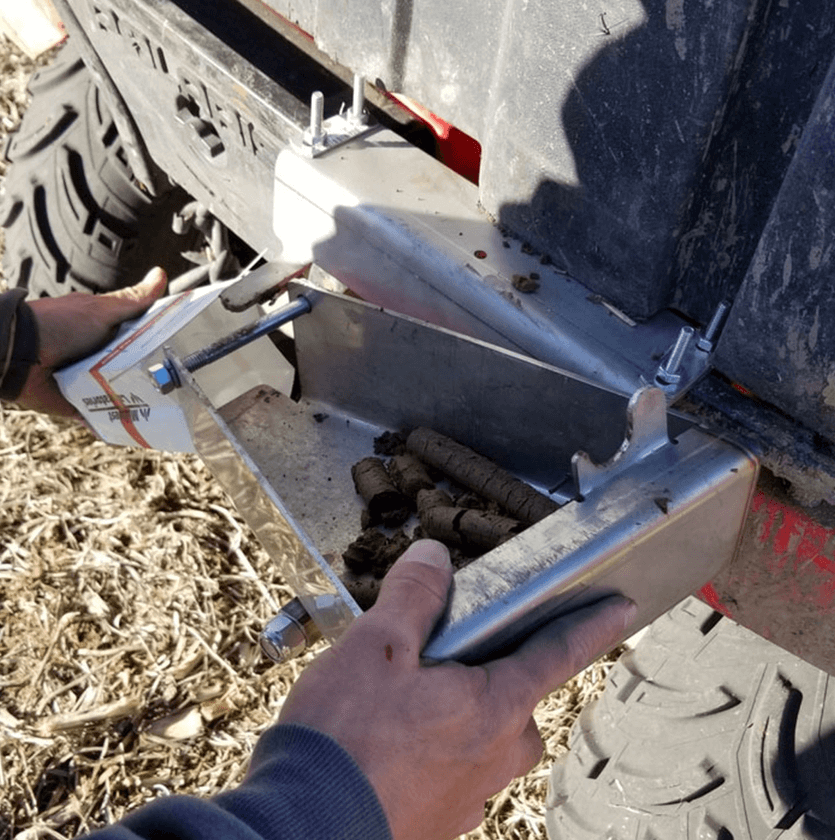Higher Yields mean Higher Nutrient Removal
Nov 16, 2020

Good growing conditions and ample rainfall are pointing toward excellent yields. But above-average yields also mean above-average nutrient removal from soils. As the harvested portion of a crop is removed from the field, all of those nutrients that were used to produce the crop also are being hauled away.
For instance, a corn crop harvested for grain removes .38 pounds of phosphorous (P) and .27 pounds of potassium (K) for each bushel. In a 200-bushel harvest, that equates to 76 pounds of P and 54 pounds of K being removed from the field. Soybeans remove .84 pounds of P and 1.3 pounds of K for each bushel harvested. So for a 50- bushel soybean crop, 42 pounds of P and 65 pounds of K are removed. Note that soybeans actually remove more potassium per bushel than corn does. Keep in mind that nutrient removal will vary up or down depending on specific field and crop parameters.
Another factor to consider is the impact of increased rainfall on nutrient loss. While we know that nitrogen can leach, soil potassium can also be lost to leaching, although much less than nitrogen. Phosphorous can leach as well but is more likely to be lost due to surface runoff.
After harvest is the best time to consider soil-testing. It’s the only true way to get an accurate reading of soil nutrient levels. There is no better, more cost-effective farm management practice than soil-testing. It gives both grower and retailer a scientific-based start to planning an efficient, effective soil fertility program. By understanding your crop nutrient status, you can better determine how much P, K, and lime should be applied this fall to prepare for a successful crop next year.
However, the first step is taking your soil samples correctly. PotashCorp’s website offers these four tips to ensure you get the best soil sample:
1. Use clean tools: Make sure soil probes and plastic buckets are clean prior to sample collection. Using contaminated equipment can alter the test results.
2. Collect enough cores:
Collect a minimum of 15 random soil samples from a representative area. Too few samples can cause inaccurate information and poor repeatability in future years.
3. Sample at consistent depths: Collecting samples at too shallow of a depth may cause nutrient concentrations to appear higher than they really are, and sampling too deeply can cause nutrient concentrations to appear lower than they are.
4. Thoroughly mix cores: Put all your samples in a clean bucket and mix them well before collecting the sample that will be submitted to the lab. The total amount of soil that is actually analyzed is small, so a poorly mixed sample can cause significant variability.
For instance, a corn crop harvested for grain removes .38 pounds of phosphorous (P) and .27 pounds of potassium (K) for each bushel. In a 200-bushel harvest, that equates to 76 pounds of P and 54 pounds of K being removed from the field. Soybeans remove .84 pounds of P and 1.3 pounds of K for each bushel harvested. So for a 50- bushel soybean crop, 42 pounds of P and 65 pounds of K are removed. Note that soybeans actually remove more potassium per bushel than corn does. Keep in mind that nutrient removal will vary up or down depending on specific field and crop parameters.
Another factor to consider is the impact of increased rainfall on nutrient loss. While we know that nitrogen can leach, soil potassium can also be lost to leaching, although much less than nitrogen. Phosphorous can leach as well but is more likely to be lost due to surface runoff.
After harvest is the best time to consider soil-testing. It’s the only true way to get an accurate reading of soil nutrient levels. There is no better, more cost-effective farm management practice than soil-testing. It gives both grower and retailer a scientific-based start to planning an efficient, effective soil fertility program. By understanding your crop nutrient status, you can better determine how much P, K, and lime should be applied this fall to prepare for a successful crop next year.
However, the first step is taking your soil samples correctly. PotashCorp’s website offers these four tips to ensure you get the best soil sample:
1. Use clean tools: Make sure soil probes and plastic buckets are clean prior to sample collection. Using contaminated equipment can alter the test results.
2. Collect enough cores:
Collect a minimum of 15 random soil samples from a representative area. Too few samples can cause inaccurate information and poor repeatability in future years.
3. Sample at consistent depths: Collecting samples at too shallow of a depth may cause nutrient concentrations to appear higher than they really are, and sampling too deeply can cause nutrient concentrations to appear lower than they are.
4. Thoroughly mix cores: Put all your samples in a clean bucket and mix them well before collecting the sample that will be submitted to the lab. The total amount of soil that is actually analyzed is small, so a poorly mixed sample can cause significant variability.